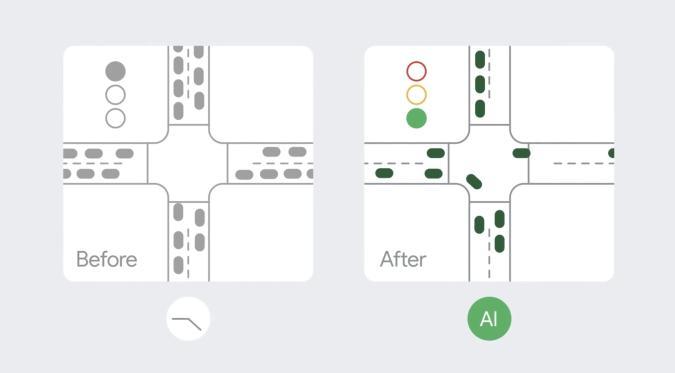
Poorly timed traffic lights don’t just waste precious minutes. Like Google’s chief sustainability officer Kate Brandt pointed out at a media event yesterday, they’re also bad for the environment and public health. The company unveiled a slew of sustainability-centric products and updates today that aim to help users make more informed, environmentally friendly decisions. But it’s also been working on a project that could use AI to make traffic lights more efficient and, as a result, decrease pollution in general.
When your vehicle stops at an intersection, that idling time leads to wasted fuel and “more street-level air pollution,” Brandt said. Google’s new project would use AI to measure and calculate traffic conditions and timing at a city’s intersections, then time them more efficiently. Brandt said one of the company’s AI research groups has been able to accurately calculate and gather this data and train a model to optimize inefficient intersections.
Google has run pilots at four locations in Israel to date, in partnership with the municipalities of Haifa, Beer-Sheva and the Israel National Roads Company. The company says it’s observed a “10 to 20 percent reduction in fuel and intersection delay time” so far. Google didn’t share any details on the average daily traffic in those intersections, though a video clip from the event showed a fairly busy junction. The company also didn’t explain how the AI would work with current systems and the lights around specific intersections.
“It’s early days,” Brandt said, “but on the back of these promising results, we are now beginning new pilots in Rio de Janeiro and speaking with other cities around the globe.” Though we’re likely still at least years away from having AI manage our traffic intersections, this is one of the steps towards the vision of completely smart cities that the industry has collectively been working on for years.
The idea of letting AI decide when to let vehicles stop or go can seem unsettling at best and potentially risky, but the goal of improving traffic light efficiency is a worthwhile one. Hopefully, with rigorous testing and safety measures in place, we may actually be able to reduce a significant amount of wasted fuel and exhaust-based pollution.









